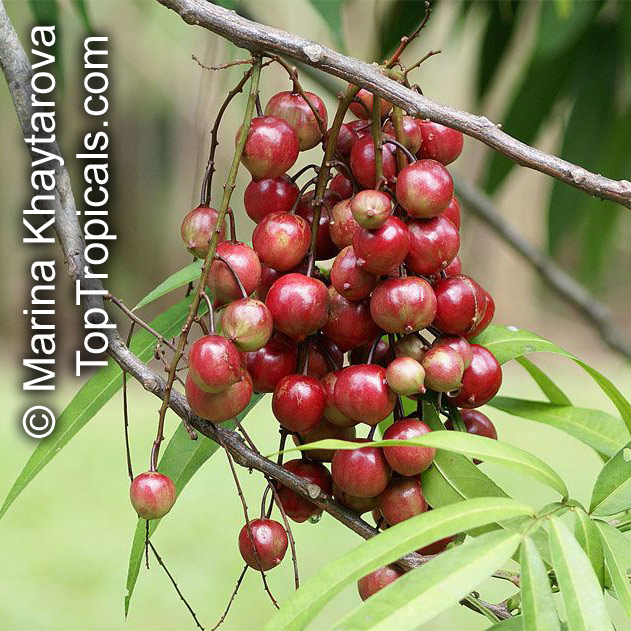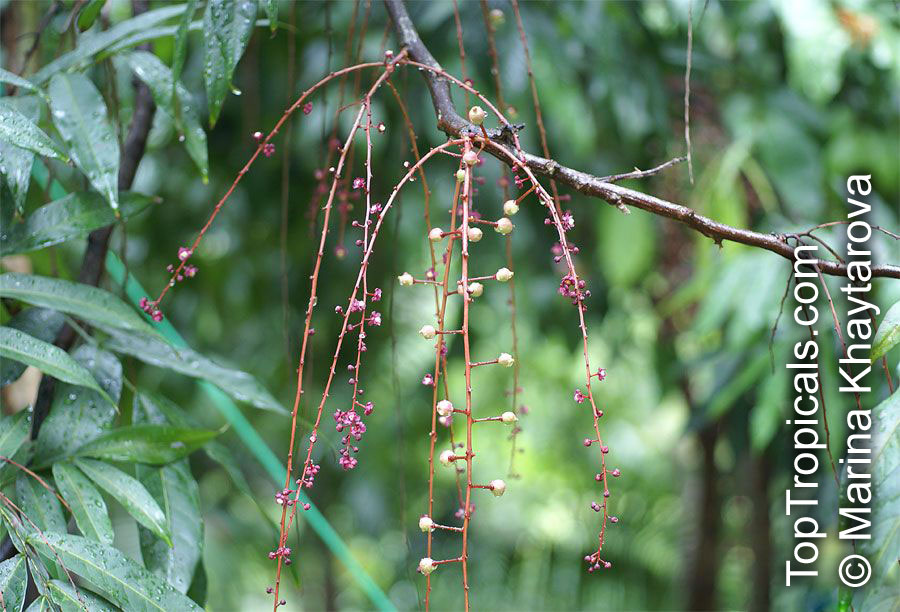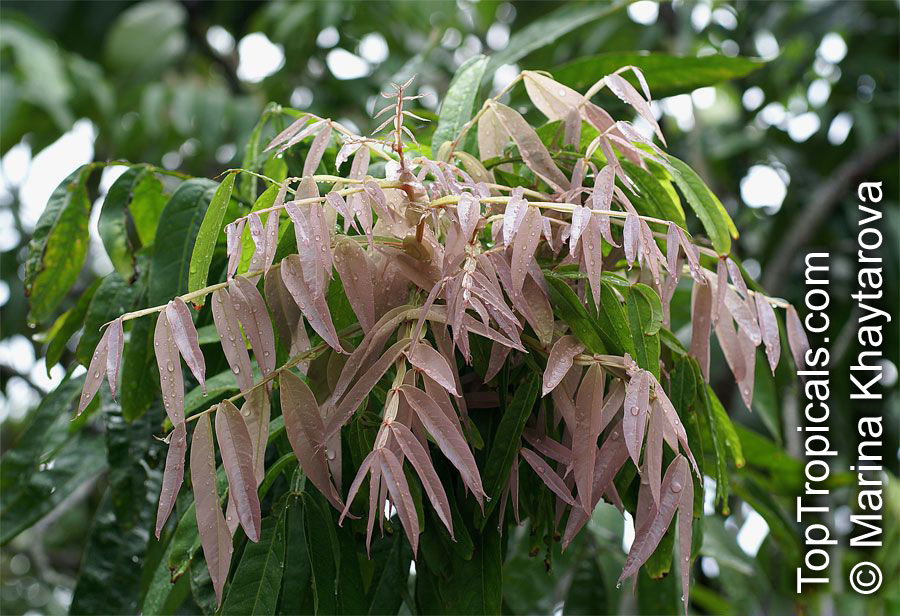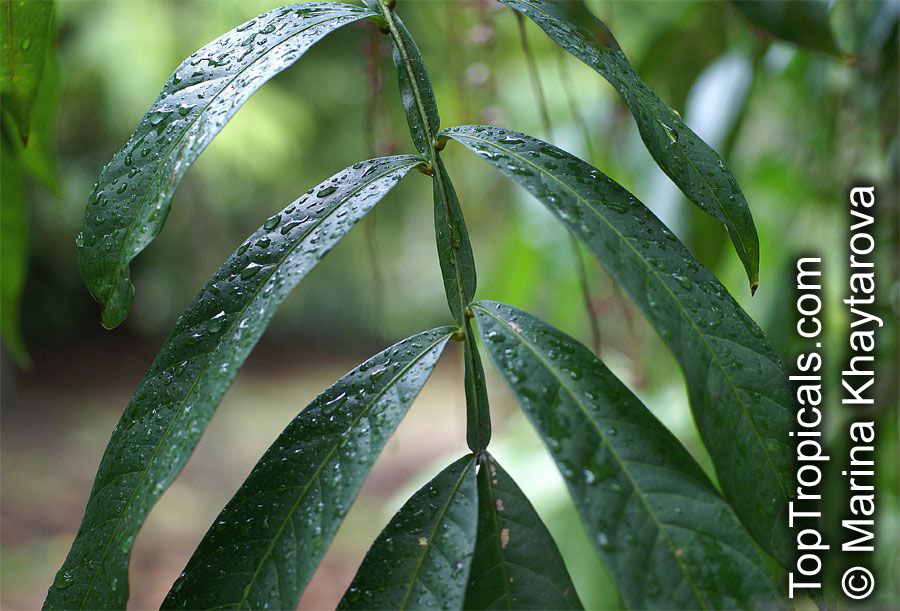Lepisanthes alata (Johore Tree)
Top Tropicals Plant Encyclopedia
Botanical names: Lepisanthes alata, Otophora alata
Common names: Johore Tree, Malaysian Lepisanthe, Perupoks
Family: Sapindaceae
Origin: Philippines, Borneo







It is native to Philippines, Borneo and East Malaysia and belongs to the family Sapindaceae.
This small tree typically grows up to 10-20 feet in height. It prefers full sunlight and regular water to grow successfully. The tree produces fragrant light pink flowers which look attractive and attract butterflies and hummingbirds. Moreover, it is also an edible tree as the fruits produced by it are edible and have a close resemblance to grapes. It can be grown in United States Department of Agriculture (USDA) Zone 9-11.
The fruits produced by Lepisanthes alata are small and yellow in color. They are quite sour in taste and usually ripen by the end of summer. The fruits can be eaten raw and can also be used in savory dishes. Since they are a rich source of dietary fiber, they help in digestion and nutrient absorption. The fruits have also been used as a traditional medicine to cure several diseases such as fever, constipation, dysentery, debility and flatulence.The tree can produce an abundant crop of fruits in the right conditions and can provide many fruits each year.
For successful growth of Lepisanthes alata in colder regions, the tree should be grown in a pot and placed indoors during winter. Planting or transferring the tree in warm areas near walls, buildings and large trees helps in providing some degree of insulation from the cold weather. Mulching with organic materials like compost or shredded bark and providing additional protection from winds also helps protect the tree from cold. The pot should also be kept in a bright location enabling sunlight to enter the pot and keep it warm for the tree.




